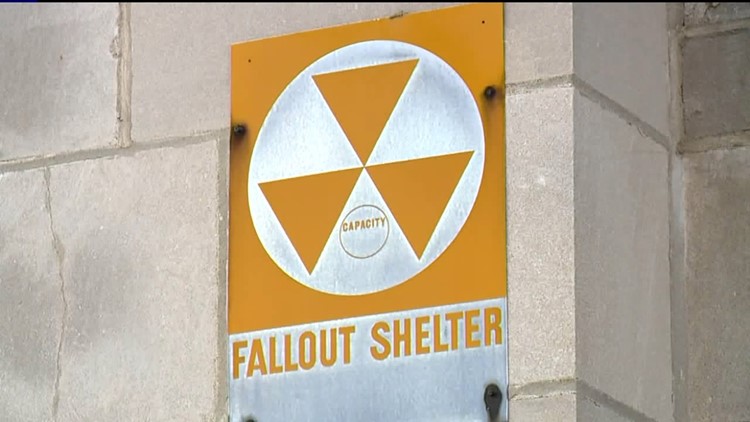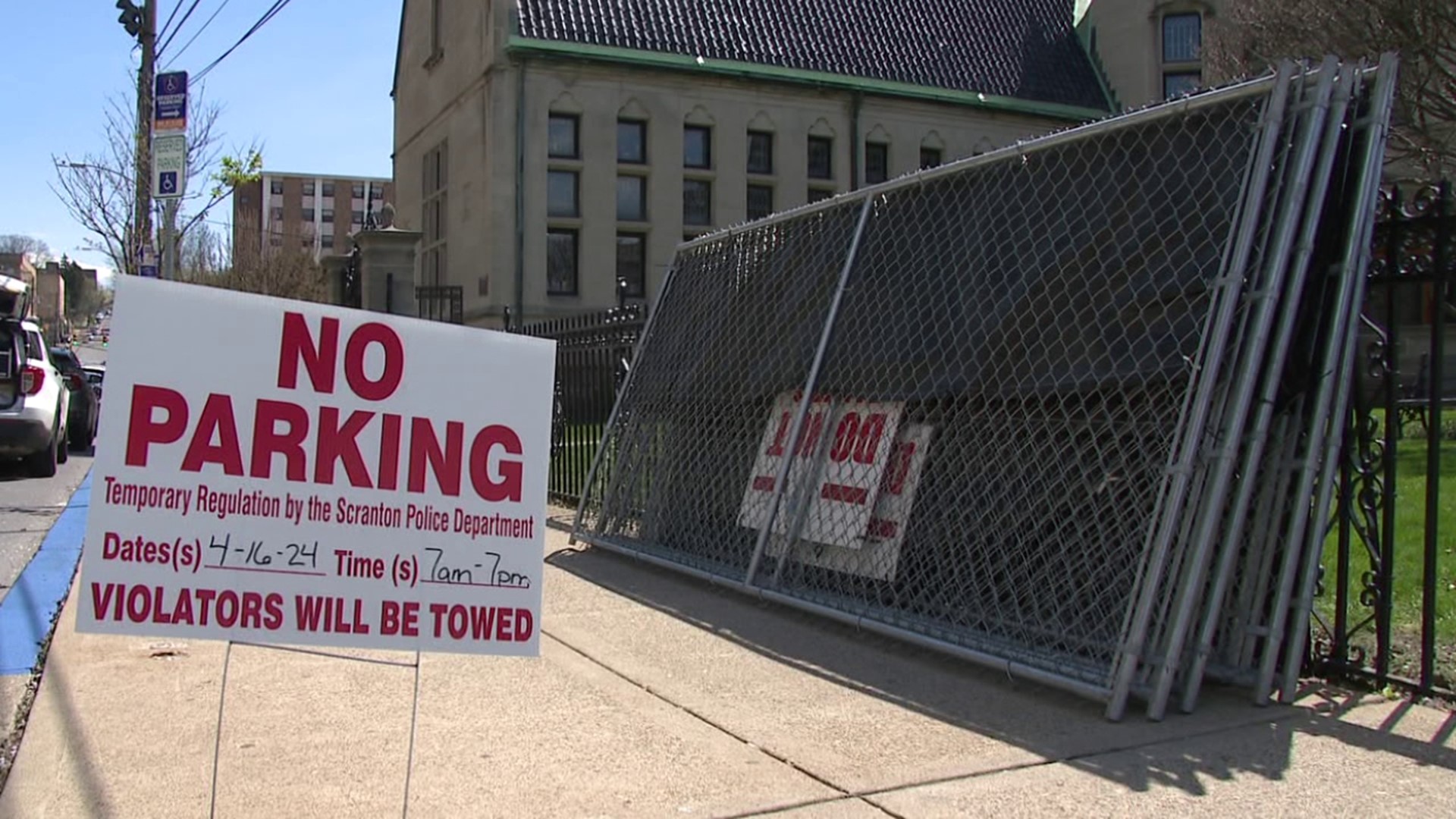Signs for fallout shelters, most common in the 1960s, are still visible on many buildings today across northeastern and central Pennsylvania.
Fallout shelters were created in the early 1960s during the Cold War. They were places people could run in case of a nuclear attack. Though many have been dismantled, some have found new uses.
West Scranton High School – many see it as a place where students learn and teachers teach, but it's also a relic of the past, a safe haven tucked away to protect us in the event of a nuclear war.
You just have to look for the sign.
"If there was ever a need for a fallout shelter, this is where they would get directed to go to," said building supervisor Stan Cohawitz.
In the basement of West Scranton High School, some old relics still line the concrete walls.
"These are just cans from when they had the fallout shelter. They were filled with drinking water," Cohawitz said.
A few yellow and black signs still can be spotted in the hallways of the high school.
Others are bolted into buildings on busy streets or taped to post office windows, though these days they go unnoticed.
"I mean, they are all over. You know, you just don't look until someone points it out and then you remember. I do, at least," said Kevin Robins.
At South Scranton Intermediate School, the former fallout shelter still bears the symbol but has been remodeled for a different use.
"We use it right now for our shipping and receiving," said Principal Daniel Gilroy.
An old steel door and brick step stone lead you into what was once the shelter, though new desks, pallets of paper, boxes, and more have replaced survival supplies that have since been thrown away.
"It's strange to see and it brings you back to a time when, luckily, we are not in those same times right now, and you wonder, well, you're also glad they didn't need to use them at that time. Being in a couple different buildings in Scranton, it's unique to see them because every building sort of has their own unique one," Gilroy said.
Fallout shelters were primarily created inside churches, post offices, and schools.
At East Stroudsburg Area High School South, construction was finished just as the program began.
"They brought us in and educated us as to where we would go, what we would do, why it was there, what would happen, how long we would stay. It was scary, and I think I was in seventh or eighth grade when that happened," Annett O'Malley recalled.
The former fallout shelter here has for the most part been transformed and its purpose now, compared to back then, is a bit more theatrical. It's where the drama club stores props and costumes.
"There were dressing rooms below the stage, much like there are today but they, at the time, just had a large open area, too, where there were large barrels that would contain drinking water supplies. There were other containers that had food items, canned goods, and things like that if they ever had to go into the shelter," Eric Forsyth explained.
Underground rooms, safe areas, tucked away from another age that would otherwise be forgotten if not for the signs.



